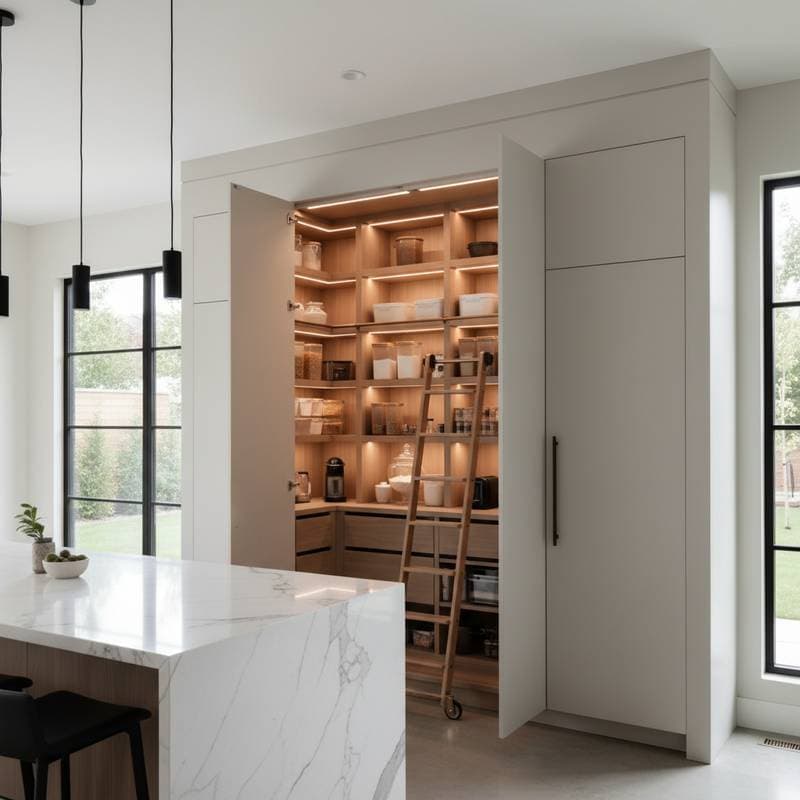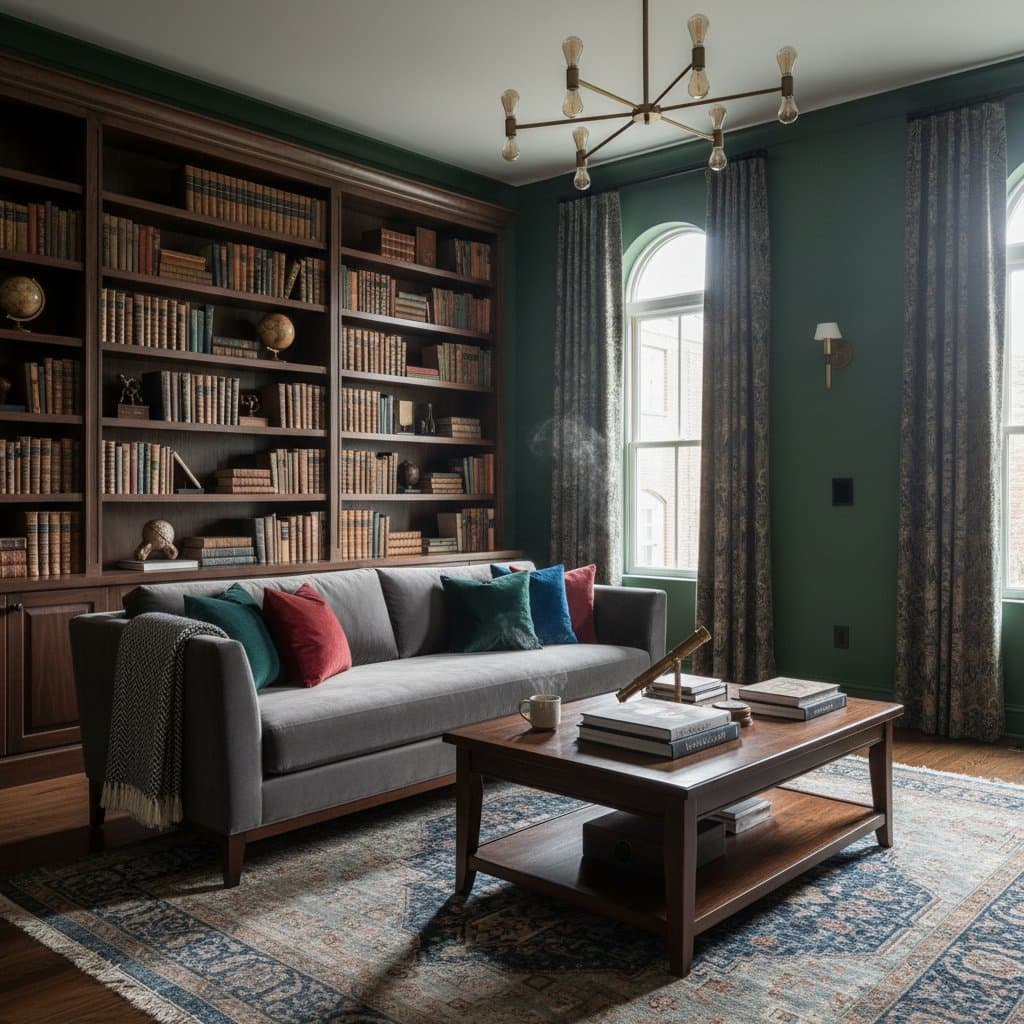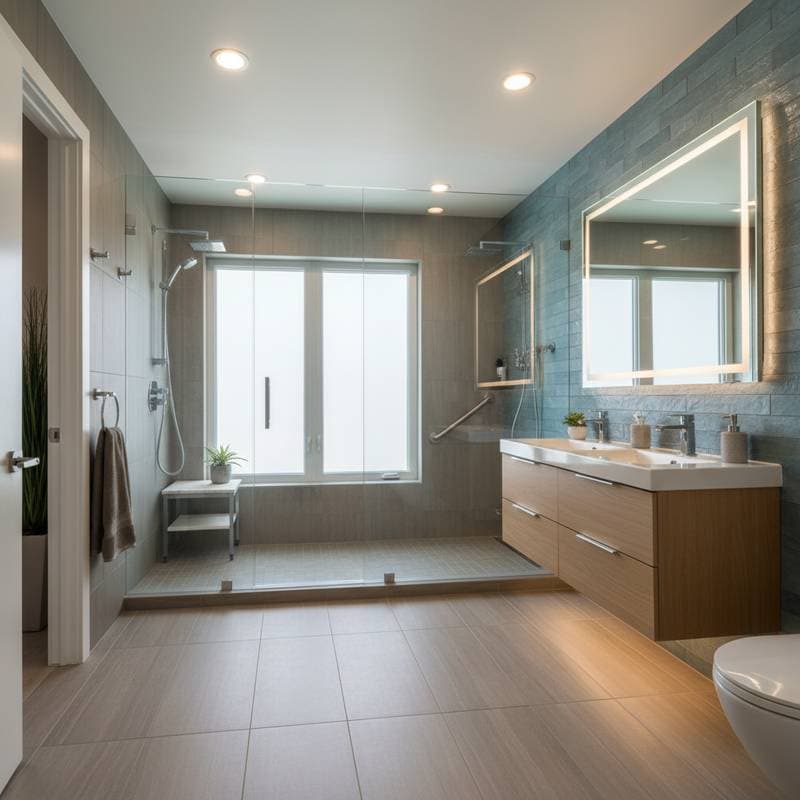Aging-in-Place: Achieve 15% ROI with Bathroom Upgrades in 2025
Homeowners who invest in aging-in-place bathroom remodels often realize up to a 15% return on investment. These modifications enhance immediate safety and comfort while increasing the property's long-term market value. By integrating thoughtful accessibility features with contemporary aesthetics, such remodels appeal to a broad audience, from families to future buyers seeking durable, adaptable spaces.
The demand for these upgrades continues to grow as populations age and universal design principles gain prominence. A well-executed project not only supports independent living but also positions the home as a forward-thinking asset in competitive real estate markets.
The Value of Bathroom Remodels in Aging-in-Place Strategies
Bathrooms represent a critical intersection of daily functionality, aesthetic appeal, and safety considerations. Simple enhancements, such as installing a curbless shower or strategically placed grab bars, significantly reduce the risk of slips and falls, which account for a substantial portion of home injuries among older adults. These changes promote ease of use without compromising the room's visual elegance when selected and installed with care.
Buyers recognize the foresight in such modifications, viewing them as evidence of proactive maintenance and adaptability. The key advantage lies in the versatility of universal design: a bathroom optimized for aging residents also accommodates children, visiting guests, and individuals recovering from temporary mobility challenges. This broad applicability translates directly into higher resale premiums, often recouping costs through enhanced perceived value.
Market data supports this trend, with properties featuring accessible bathrooms selling faster and at premiums in regions with aging demographics. Professional designers emphasize blending functionality with style, using neutral palettes and sleek fixtures to avoid an institutional appearance.
Breaking Down Costs and Influencing Factors
Understanding the financial aspects of an aging-in-place bathroom remodel helps homeowners allocate budgets effectively. Costs depend on the scope of work, material selections, and local economic conditions. The following table outlines typical expenses for common upgrades, along with factors that influence pricing.
| Task | Typical Cost | Key Price Influences |
|---|---|---|
| Walk-in or curbless shower | $5,000 - $12,000 | Tile selections, waterproofing methods, plumbing relocations |
| Grab bars and safety rails | $150 - $800 | Material types (e.g., stainless steel vs. plastic), quantity, wall reinforcement needs |
| Non-slip flooring | $1,500 - $4,000 | Tile dimensions, surface texture, subfloor preparation |
| Lighting and ventilation upgrades | $800 - $2,500 | Electrical routing complexity, fixture efficiency and durability |
| Full bathroom remodel | $12,000 - $30,000 | Overall layout alterations, finish quality, regional labor rates |
Regional variations play a significant role; urban areas with high demand for skilled labor tend to command higher prices. To manage expenses, prioritize retaining existing plumbing configurations and opting for durable, mid-tier materials that balance cost and longevity. Consulting multiple contractors for quotes ensures competitive pricing without sacrificing quality.
Deciding Between DIY and Professional Installation
Suitable for DIY
Certain updates lend themselves to do-it-yourself approaches, particularly those involving minimal structural changes. For instance, installing grab bars on pre-reinforced walls or adding non-slip mats over existing flooring requires only basic tools and straightforward instructions. These surface-level modifications allow homeowners to test enhancements affordably while gaining hands-on experience.
When to Engage Professionals
Projects involving plumbing rerouting, electrical modifications, or load-bearing adjustments demand expert intervention. Licensed professionals ensure compliance with building codes, proper waterproofing, and seamless integration of features. Hiring a contractor certified as an Aging-in-Place Specialist (CAPS) provides specialized guidance on ergonomic layouts and aesthetic harmony, resulting in a safer, more compliant outcome.
Professionals also handle warranties and insurance considerations, protecting against future liabilities. For comprehensive remodels, their expertise prevents common pitfalls like inadequate drainage or unstable fixtures, ultimately preserving the investment's value.
Adapting to Regional and Climate Considerations
Local environmental factors influence material choices and installation techniques in aging-in-place remodels. In regions with harsh winters, incorporating radiant heated flooring or insulated towel warmers improves comfort and mitigates moisture buildup from condensation. Coastal or humid climates benefit from corrosion-resistant hardware, such as brushed nickel fixtures, and mold-resistant backer boards to withstand salt air and high humidity.
Plumbing considerations, like frost line depths, may indirectly affect pipe routing in bathrooms located on exterior walls. Always verify local regulations; many municipalities mandate permits for electrical or plumbing alterations, though accessibility-focused projects sometimes qualify for expedited approvals or financial incentives. Contacting the building department early streamlines the process and avoids delays.
Essential Safety Features and Compliance Standards
Prioritizing safety forms the foundation of any aging-in-place bathroom project. Key requirements include equipping electrical outlets in wet areas with ground-fault circuit interrupter (GFCI) protection to prevent shocks. Grab bars must anchor into studs or use reinforced blocking capable of supporting at least 250 pounds, ensuring reliability during use.
Shower areas require a gentle slope toward the drain to facilitate water runoff and minimize pooling hazards. Select fixtures aligned with Americans with Disabilities Act (ADA) guidelines or universal design principles for optimal accessibility, such as lever-handled faucets and lowered sinks.- Verify all installations include robust waterproofing membranes to shield against leaks.
- Integrate exhaust fans rated for adequate airflow to control humidity and prevent mold growth.
- Conduct post-installation tests for stability and functionality before regular use.
Neglecting these elements can lead to structural issues over time, diminishing both usability and property worth. Regular maintenance, such as cleaning grout lines and inspecting seals, sustains the remodel's effectiveness.
Planning and Executing Your Remodel
Begin with targeted assessments to identify priorities, such as evaluating current slip risks or lighting adequacy. Start with incremental changes: replace glossy tiles with textured alternatives, install adjustable-height lighting, and add grab bars in high-use areas like the shower and toilet. Document all purchases and installations meticulously to support future resale claims.
For larger undertakings, develop a phased budget that aligns with financial goals. Collaborate with designers to visualize layouts using simple sketches or software tools, ensuring the space remains intuitive and inviting. Focus on resilient materials like porcelain tiles and solid-surface countertops, paired with clean lines and neutral tones for enduring appeal.
These strategies not only extend comfortable living durations but also draw discerning buyers who value practical innovations. A thoughtfully remodeled bathroom becomes a cornerstone of home equity, blending daily utility with strategic financial benefits.
Frequently Asked Questions
What is the average cost of an aging-in-place bathroom remodel?
Projects typically range from $12,000 to $30,000, influenced by material choices, layout modifications, and local labor costs.
Do permits apply to installing grab bars or non-slip flooring?
Surface installations like these generally do not require permits, but any plumbing or electrical work necessitates approval from local authorities.
Which safety upgrade offers the greatest impact?
A curbless shower equipped with non-slip surfaces and integrated grab bars most effectively minimizes fall risks, enhancing overall security.










